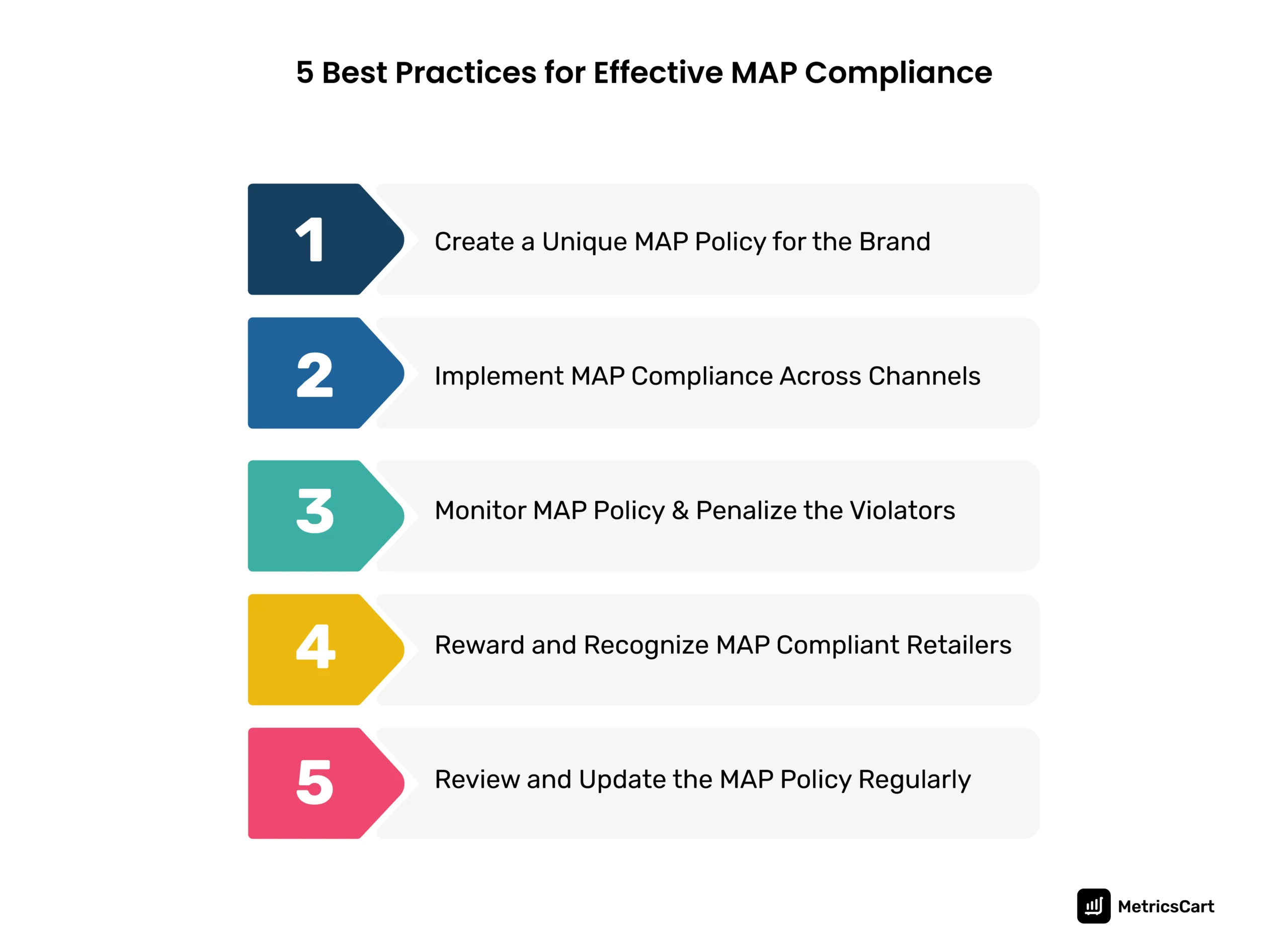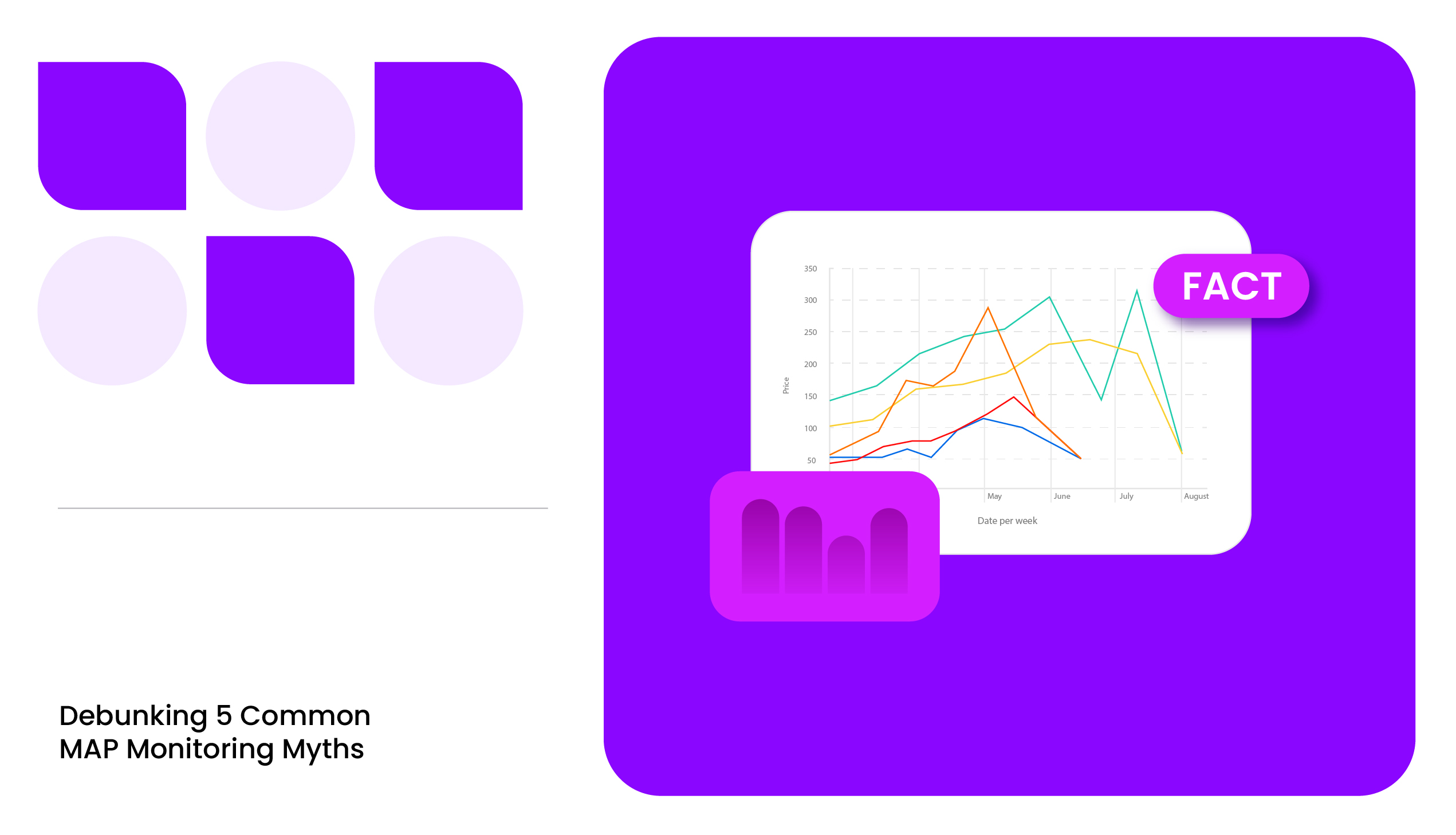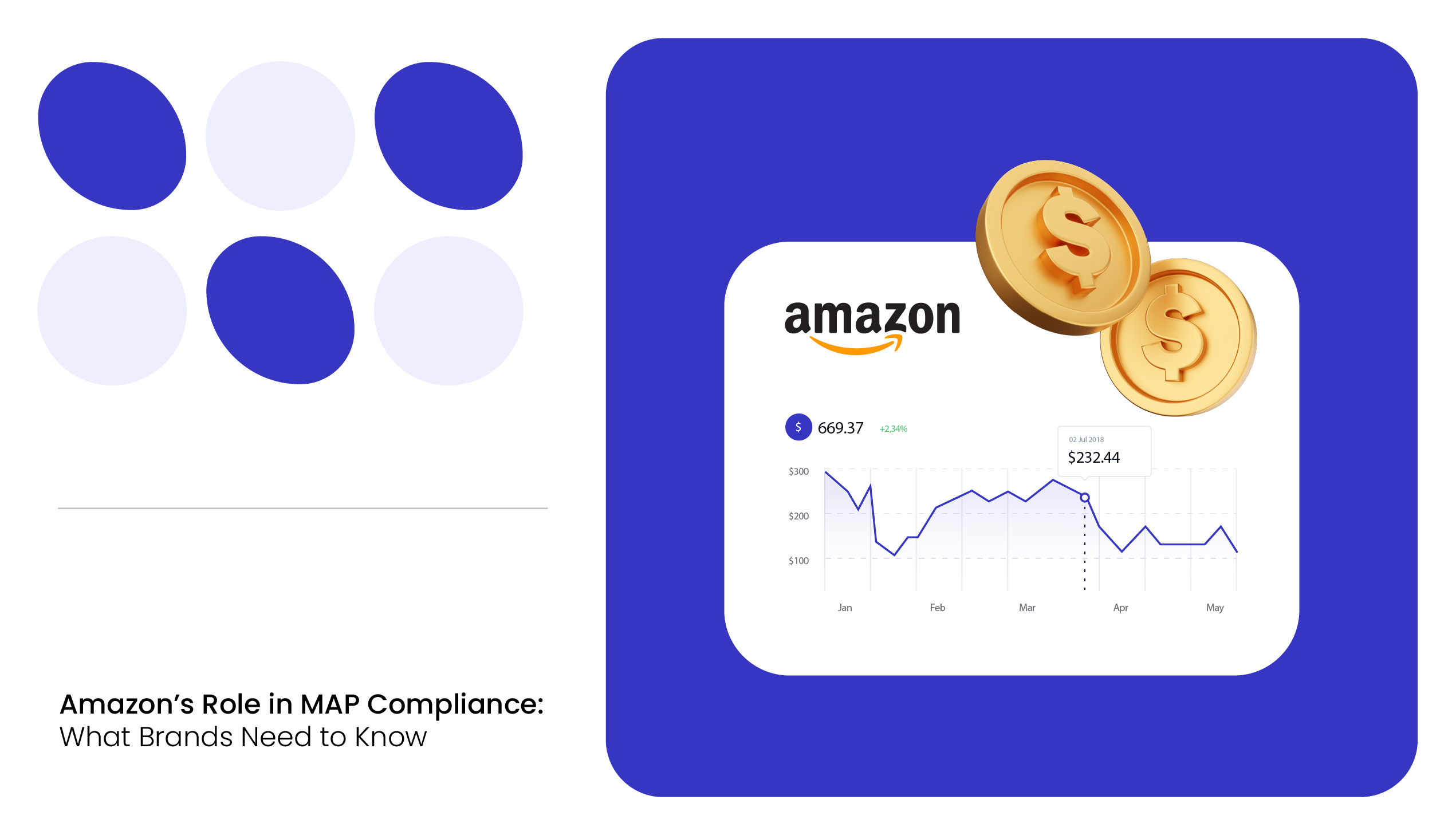MAP compliance refers to fulfilling the minimum advertised price policy by not promoting and selling a product below the price determined by the brand or manufacturer.
It is an essential aspect of retail and manufacturer relations, influencing pricing strategies, competitive dynamics, and overall brand perception.
Without effective MAP enforcement, brands risk losing control over how their products are priced, which can lead to diminished brand value, reduced margins, and price wars that undermine profitability.
That’s where MetricsCart’s MAP compliance tool comes in. Designed to help brands stay on top of pricing violations, this comprehensive solution provides real-time monitoring and detailed reporting across multiple online marketplaces.
How Does MAP Compliance Work?
Manufacturers set MAP pricing for their products, and retailers agree to adhere to this price in their advertising. This agreement typically covers all forms of advertising, including:
- Online ads
- Print ads
- Broadcast messages
- In-store displays
If a retailer is non-compliant, the manufacturer can issue warnings, impose penalties, or even cease supplying products to the non-compliant retailer.
Additionally, in the US, MAP policies are legally binding under Federal Antitrust Law, and brands can adopt corrective measures against retailers who fail to remain compliant with the agreed-upon policy.
Why is MAP Compliance Important?
MAP pricing compliance is crucial for several reasons, impacting brands and retailers significantly. Here’s why it’s important:
- Prevents products from being perceived as lower quality or less desirable, maintaining brand value in the marketplace
- Ensures that no retailer can undercut competitors by lowering prices, avoiding price wars, and enabling fair competition
- Provides legal advantage against unauthorized sellers and MAP violators, offering a basis for taking corrective actions
- Builds customer trust and satisfaction through consistent pricing across channels
- Helps identify and support authorized sellers, discouraging unauthorized sellers who often engage in price undercutting.
READ MORE | Want to Learn About MAP Enforcement in Detail? Check out A Beginner’s Guide to MAP Enforcement in E-Commerce
5 Best Practices for Effective MAP Compliance.
MAP compliance is essential for maintaining brand integrity and ensuring a fair, competitive environment. Here are some best practices for effective MAP pricing compliance:

1. Create a Unique MAP Policy for the Brand
The first step in ensuring MAP compliance is to create a MAP pricing policy that meets the requirements and goals of the brand. For this, they must:
- Analyze the pricing trends of competitor products and determine a suitable price margin for the product.
- Provide detailed guidelines that retailers and resellers must comply with while advertising your product and encourage them to do so by offering rewards.
- Clearly define what constitutes a violation, how violations will be detected, and the penalties imposed on MAP policy violators.
- Consult an anti-trust lawyer to ensure that the details are legal without any loopholes.
2. Implement MAP Policy Across Channels
Once the MAP policy is created, brands must implement it across all channels, including online marketplaces, brick-and-mortar stores, and third-party sellers. Retailers, regardless of size or sales channels, need to be informed about the MAP policy.
Brands should also alert retailers whenever there are updates to the policy terms. This prevents significant price variations between sellers and ensures fair competition. Moreover, brands should communicate the benefits of being MAP-compliant and the consequences of non-compliance.

3. Monitor MAP Policy and Penalize the Violators
Regular monitoring is crucial to enforce MAP compliance effectively. For this, brands can leverage the MAP compliance solution to track the prices at which online sellers sell their products and track any MAP violators simultaneously.
In addition, brands must also establish a transparent process for addressing violations. This can include:
- Alerts for the retailer for the initial violation
- Grace period for correction
- Suspension or termination of retailer agreement for continued non-compliance
READ MORE | Confused About Selecting the Right MAP Monitoring Tool? Dive into How to Choose MAP Monitoring Software for Your Business
4. Reward and Recognize MAP Compliant Retailers
Brands can implement a system to reward and recognize retailers who consistently adhere to the MAP policy. They can offer incentives such as:
- Discounts on future orders
- Exclusive deals on new products
- Acknowledge compliant retailers through newsletters, the brand’s website, or social media channels.
This helps build strong partnerships and encourages other retailers to comply with the MAP policy.
5. Review and Update the MAP Policy Regularly
It is essential for brands to continuously review and update their MAP to remain competent and relevant in the market. They must update the MAP pricing to reflect the changes in distribution strategies or product lines. For example, if a brand is releasing a new product, it can reduce the MAP of current products to clear out the inventory for new ones.
Moreover, brands can also provide exceptions from time to time in events like Black Friday or Amazon Prime Day, when retailers offer huge discounts. Thus, it is important to ensure that the MAP policy adapts to new challenges and opportunities.
READ MORE | Want to Manage MAP Violations Effectively? Check out How Brands Manage MAP Violations To Sustain Brand Value?
How Does MetricsCart Ensure MAP Compliance for Brands?
Ensuring MAP compliance is critical to protecting your brand’s value and profitability. With MetricsCart’s MAP compliance tool, you gain a powerful solution to monitor, track, and enforce pricing policies across multiple sales channels.
Our robust solution can:
- Track and analyze MAP violation trends across channels
- Offer up-to-date MAP compliance monitoring reports
- Monitor newly launched products to ensure MAP compliance
- Receive timely alerts on the violators
Leverage MetricsCart’s MAP compliance tool to safeguard your brand’s integrity and maximize profitability.
Enforce MAP Policies Effortlessly and Protect Your Margins Today!
FAQs
The MAP compliance tool continuously monitors pricing data across marketplaces where your products are listed. It detects any instances where products are advertised below the set minimum price, generates detailed reports on these violations, and sends timely alerts to your team for action.
MAP compliance is crucial for maintaining the perceived value of your brand and products. If retailers discount your products too aggressively, it can harm your brand’s image, affect customer trust, and erode profit margins.
The MAP compliance tool provides real-time monitoring, so pricing data is updated continuously. You can choose how frequently you want to receive reports, whether that’s daily, weekly, or after specific events like product price changes.
The MAP compliance tool enables you to create custom alerts for specific products, brands, or categories within your product catalog.
Yes, the MAP compliance tool is designed to be user-friendly and integrates easily with your existing e-commerce platforms, marketplaces, and sales channels.







